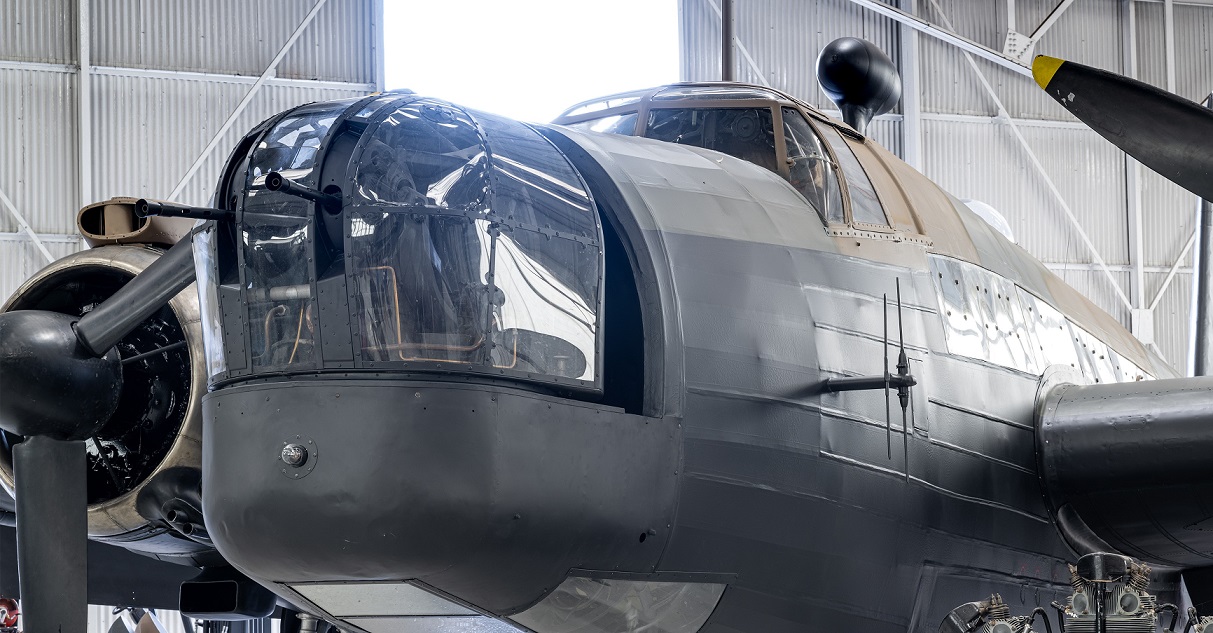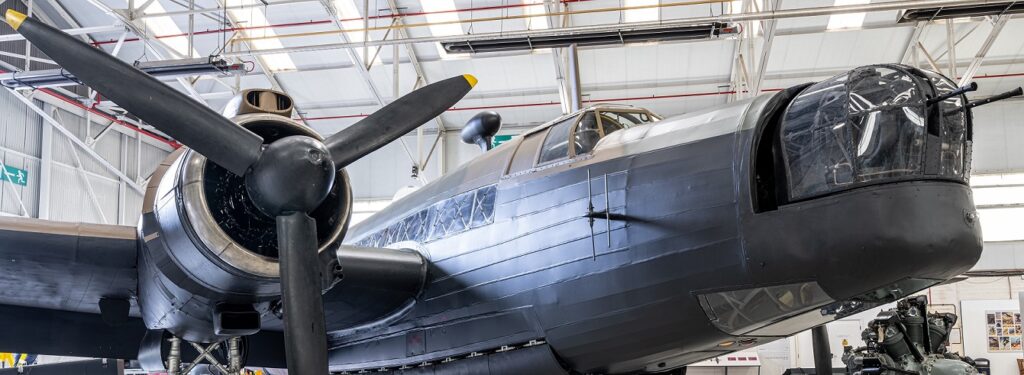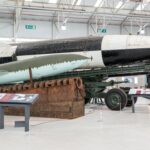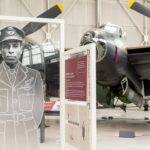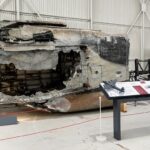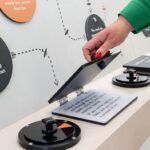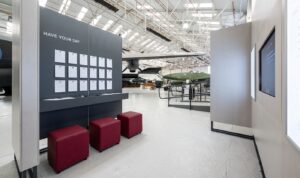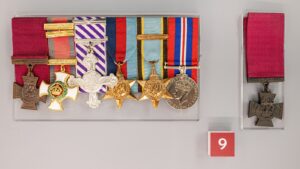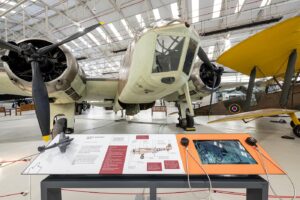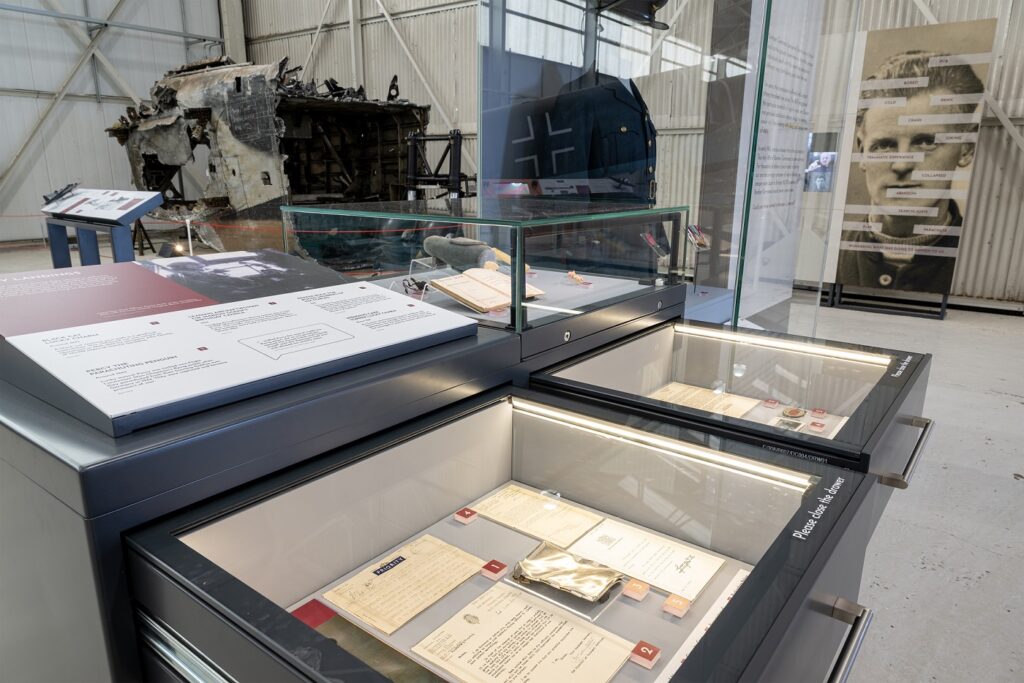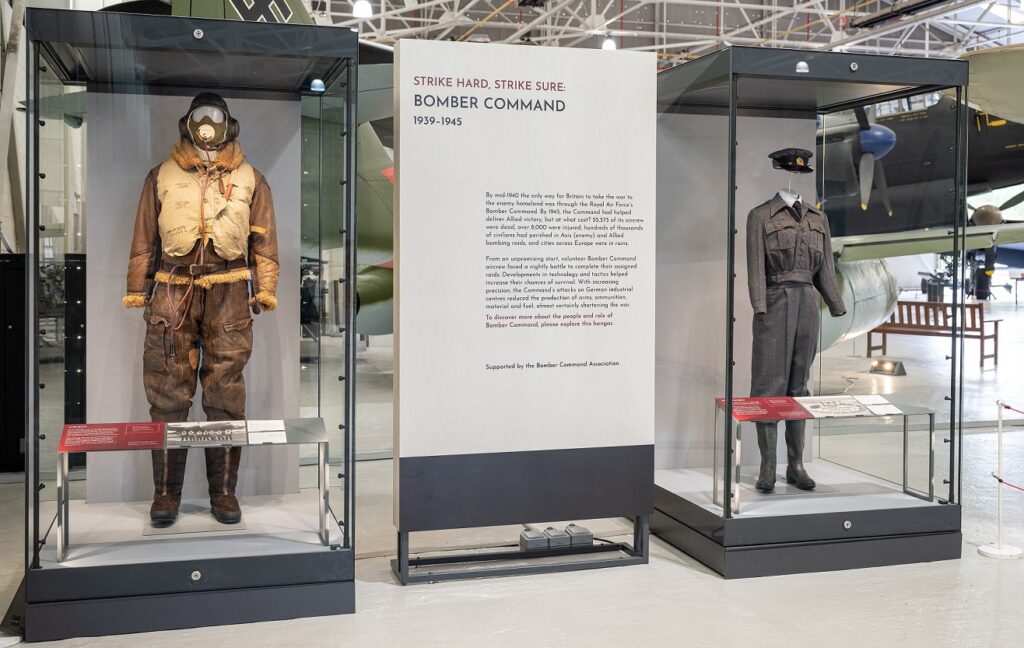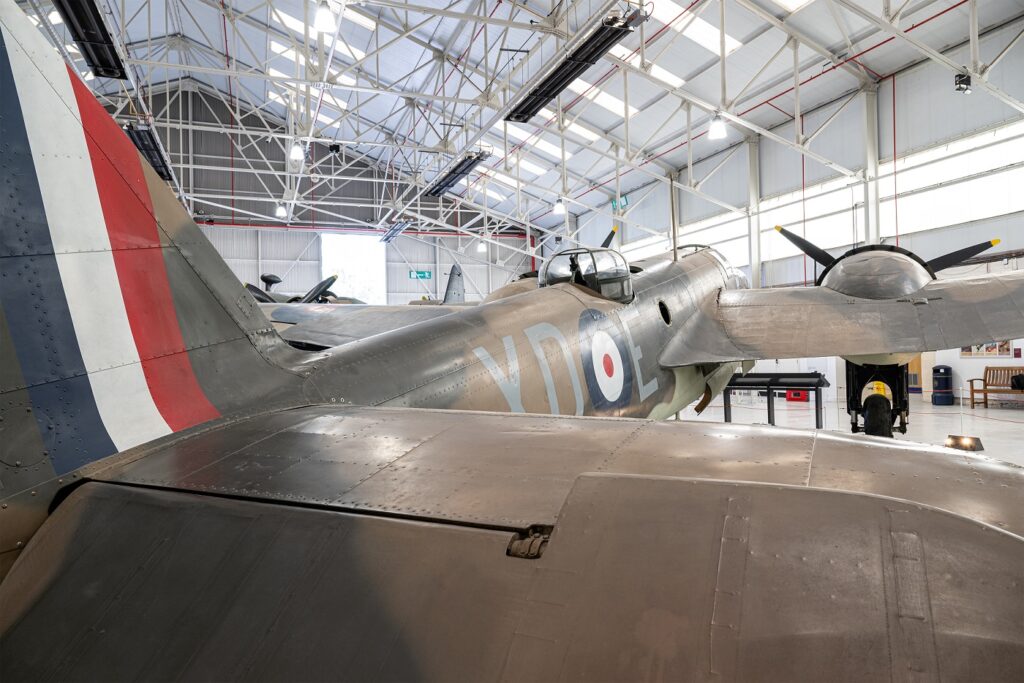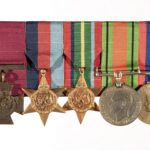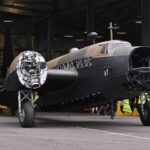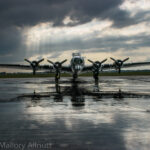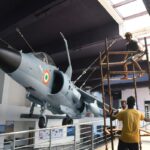Marking the 80th anniversary of the famous ‘Dambusters’ raid, a new permanent exhibition, ‘Strike Hard, Strike Sure: Bomber Command 1939–1945’ is now open at the Royal Air Force Museum Midlands. Featuring the newly restored Vickers Wellington bomber, Guy Gibson’s Victoria Cross, and the new arrival the Bristol Blenheim, discover how the RAF’s Bomber Command took the war to the enemy. The new interactive displays tell the wider Bomber Command story, exploring stories of the crew, technology, and raids that were crucial to Allied victory.
At the center of the new exhibition is the Wellington B Mk X bomber, one of only two remaining examples, and on display for the first time in the Midlands after more than a decade of conservation work. The Wellington was widely used as a night bomber in the early years of the Second World War, and by 1942 Wellingtons were the most numerous aircraft in Bomber Command. They began to be replaced by more capable four-engined heavy bombers such as Halifaxes and Lancasters but continued to operate with Bomber Command as a training aircraft. The Wellington’s rear turret is displayed alongside the aircraft, allowing visitors to peer inside the fuselage and view its famous geodetic structure designed by Barnes Wallis. Interactive displays around the Wellington focus on the roles of the five-strong crew, their extraordinary service, and the close bonds they developed when flying together.
On display for the first time in the Midlands is the Bristol Blenheim Mk IV, a light bomber and night fighter. Although Blenheims were faster than other RAF fighters when they entered service in 1937, by the start of the war they proved to be too slow and lightly armed to defend themselves adequately. As a result, they suffered high casualty rates. With no surviving RAF Blenheims, this Royal Canadian Air Force example represents aircraft of No.139 Squadron, the first RAF squadron to undertake an operational mission in the Second World War.
Personal artifacts from the Museum’s collection are now on display, many for the first time, sharing the stories of RAF aircrew and groundcrew, including Wing Commander Guy Gibson’s Victoria Cross and medal bar. Gibson received the medal for his leadership of No. 617 Squadron, The Dambusters, on their first operation over Germany, the daring Dams raid of 17 May 1943. He completed an astonishing 177 operations and was awarded the Victoria Cross as recognition of the leadership, determination, and valor he demonstrated throughout his career. Other artifacts featured in the new display include a collection of aircraft nose art, flying suits, aircrew lucky charms, uniforms, and caps, log books and post-raid reconnaissance photographs. Some of the innovative technical developments which supported Bomber Command to deliver their mission are represented through items including Barnes Wallis’s bouncing bomb test models and sketch.
People’s stories are at the heart of the Bomber Command storytelling. Men and women from across the world, on the ground and in the air, played a part. Throughout the exhibition, silhouettes depict the stories of individuals who played crucial roles, like that of Squadron Leader Ulric Cross DSO DFC. Born in Trinidad, Ulric Cross enlisted in the RAF in 1941 and trained as a navigator. He flew Pathfinder sorties on Mosquitos and completed 80 operations, his proficiency and skill leading to his award of both the Distinguished Service Order and the Distinguished Flying Cross. Of around 6,000 volunteers who came to the UK from the Caribbean to support the war effort, 450 were aircrew and 360 of these flew with Bomber Command.
Interactive elements of the display will encourage participation from visitors of all ages. Learn about ordnance, navigation, protecting the bombers, pathfinders, and an unpredictable enemy – the weather! A timeline shows the key activities of Bomber Command during the Second World War and illustrates how bomber aircraft and tactics changed. View animations, video footage and personal accounts in a series of videos. Have your say and contribute to the debate about the RAF’s contribution on the wall of reflection.
Other aircraft on display as part of the Bomber Command exhibition include; the de Havilland Mosquito, Junkers Ju 88, Messerschmitt Me 410, Focke-Wulf Fw 190, Messerschmitt Me 262, a section of a Short Stirling Mk III and a Tiger Moth in which many bomber pilots received their first flying experience. Interactive display panels allow visitors to delve deeper into the role of each aircraft including a view inside the cockpit. Displayed alongside the aircraft is a V-1 ‘doodlebug’ flying bomb and catapult ramp, and a V-2 supersonic ballistic missile.
The ‘Strike Hard, Strike Sure: Bomber Command 1939–1945’ exhibition is now open. The Museum is open daily from 10am and entry is free. Pre-book your arrival time online at rafmuseum.org/midlands.







